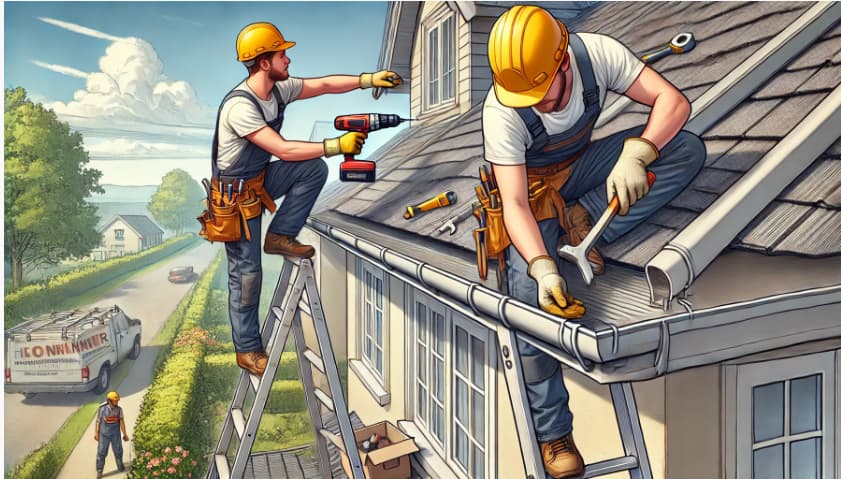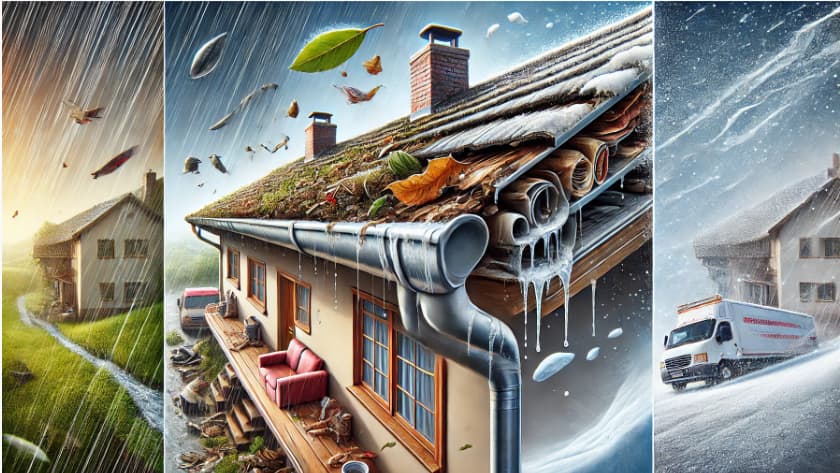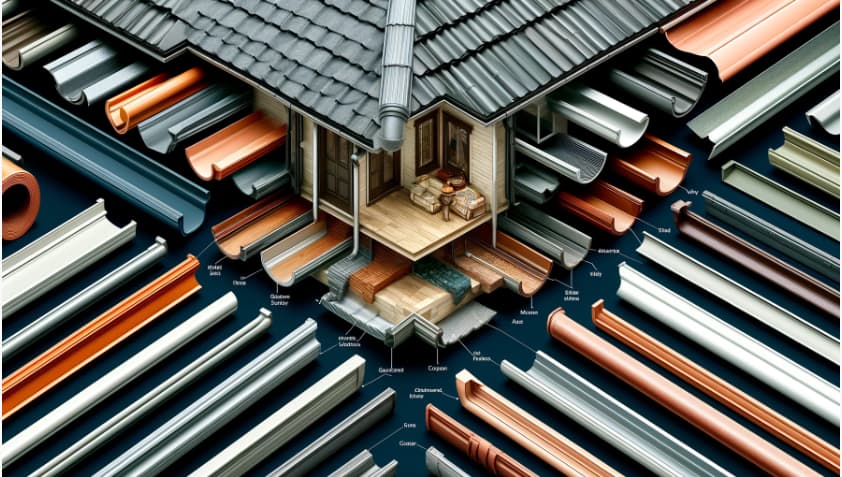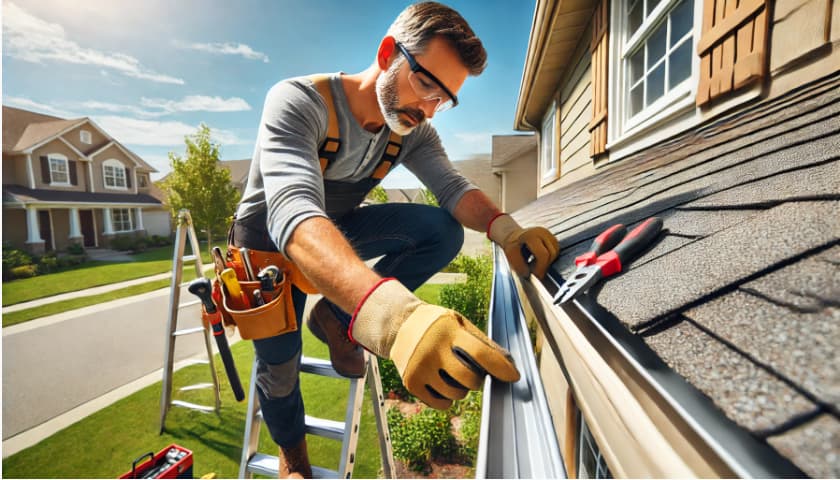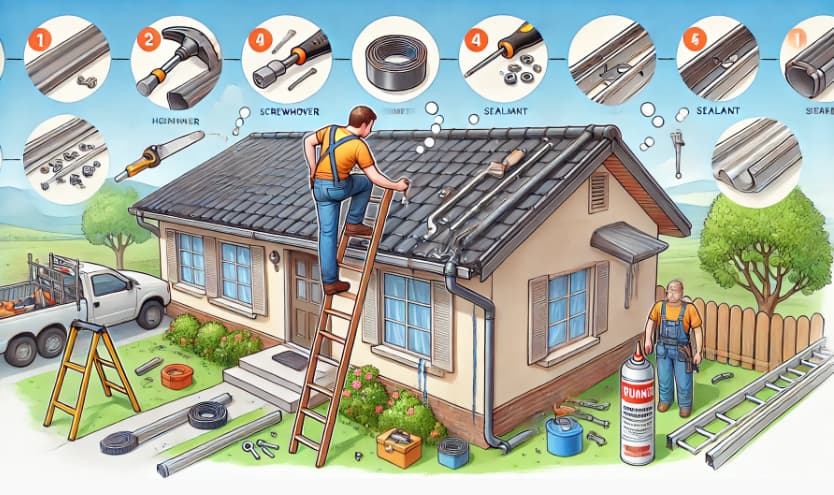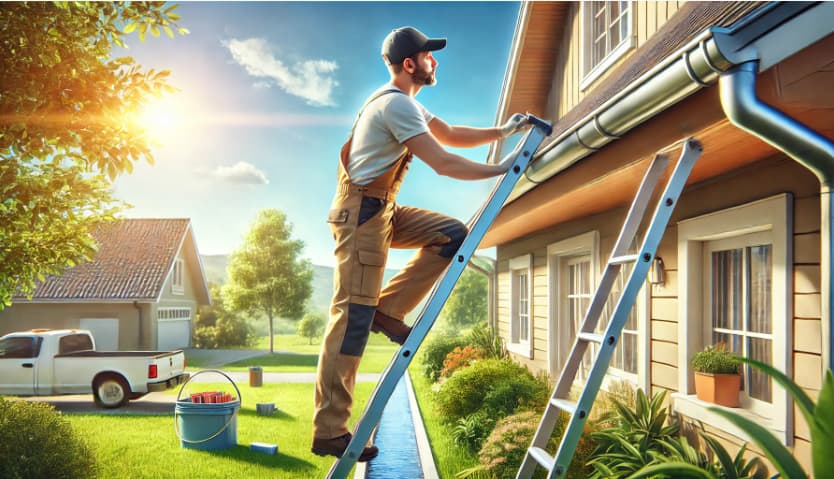Gutter Repair
Gutter Repair: Essential Tips and Costs
Gutters are an essential part of your home’s weatherproofing and water drainage system. Proper maintenance and timely repairs prevent serious water damage to your home’s foundation and structure.
Understanding how to identify and address gutter issues quickly can save you from facing hefty repair bills.
In this guide, we explore various aspects of gutter repair, from recognizing early signs of damage to choosing the right materials for replacement.
Whether you’re considering a DIY fix or hiring a professional, this article provides the insights you need to make informed decisions.
2. Recognizing Gutter Issues
Detecting problems with your gutters early can make the difference between a simple fix and a costly repair. Here are key indicators that your gutters need attention:
- Water Overflow: This is often the first sign of a clog or blockage. Leaves, twigs, and debris can obstruct water flow, causing it to spill over the sides.
- Sagging Gutters: If your gutters are pulling away from the house, it could indicate that the fasteners are failing or the fascia boards are rotting.
- Visible Cracks or Holes: Small cracks can grow over time, letting water escape close to your home’s foundation.
- Peeling Paint or Rust: This could suggest that water is continuously present, likely due to poor drainage or leaks.
- Mildew or Pools of Water: These signs near the foundation can indicate that your gutters are not directing water away from your home effectively.
Early detection and repair can extend the life of your gutters and protect your home from water-related damage.
Keep an eye out for these signs and take action when necessary to maintain the effectiveness of your gutter system. Spot the signs before it’s too late! Learn how to identify gutter problems now.
3. Causes of Gutter Damage
Gutter damage can arise from various sources, impacting their efficiency and longevity. Understanding these causes can help you prevent potential issues:
- Weather Conditions: Severe weather such as heavy snow, ice, or strong winds can strain or physically damage gutters.
- Tree Limbs: Overhanging branches can scratch, dent, or even tear gutters upon impact, especially during storms.
- Improper Installation: Gutters that are not installed correctly may lead to poor water flow, sagging, or detachment from the house.
- Lack of Maintenance: Failing to clean gutters regularly can lead to clogs, which add weight and stress, potentially causing them to sag or detach.
- Age and Corrosion: Over time, gutters can deteriorate, especially if they are made from materials susceptible to rust or corrosion.
By identifying and addressing the underlying causes of damage, you can take preemptive measures to maintain your gutters and ensure they function properly for years to come. Uncover the hidden enemies of your gutters! Find out what’s damaging them.
4. Types of Gutters and Materials
Choosing the right type of gutters and materials is crucial for ensuring long-lasting protection for your home. Here are some common options:
- Vinyl Gutters: Lightweight and easy to install, vinyl gutters are resistant to rust and rot but can become brittle in extreme cold.
- Aluminum Gutters: Durable and rust-resistant, they can handle severe weather conditions and are available in a wide range of colors.
- Stainless Steel Gutters: Highly durable and nearly indestructible but more expensive than other materials.
- Copper Gutters: Offer exceptional longevity and develop a patina over time, adding aesthetic value to the property.
- Zinc Gutters: Long-lasting and resistant to corrosion, zinc gutters weather to a distinctive, protective patina.
Each material has its pros and cons, balancing factors like cost, durability, maintenance, and aesthetics. Choosing the right type depends on your climate, budget, and the style of your home.
Understanding the materials and types available can guide you in making the best choice for your needs, ensuring your gutters are both functional and complementary to your home’s exterior.
Choosing the right gutters can be tricky. Discover the best materials for your home today!
5. DIY Gutter Repair Tips
For homeowners inclined to manage maintenance themselves, here are essential DIY gutter repair tips:
- Safety First: Always use a sturdy ladder with a stabilizer. Wear gloves to protect your hands from sharp edges.
- Unclogging Gutters: Start by removing debris from gutters and downspouts using a scoop or garden hose. Ensure downspouts are clear to allow free flow of water.
- Sealing Leaks: Identify leaks in your gutters and apply silicone or special gutter sealant to dry, clean surfaces.
- Fixing Sagging Gutters: Check the gutter hangers. If they are spaced too far apart, add more hangers for support. Ensure they are securely attached to the fascia.
- Replacing Damaged Sections: For severely damaged sections, measure and cut a new piece of gutter to size. Fasten it with screws and seal the joints.
These simple repairs can extend the life of your gutters, saving money on professional services. However, for larger or more complex issues, professional help might be necessary. Ready to tackle gutter repairs yourself? Get our expert DIY tips and tricks.
6. Professional Gutter Repair Services
When gutter issues exceed DIY capabilities, it’s prudent to call in the professionals. Here’s what professional gutter repair services offer:
- Comprehensive Assessment: Experts can evaluate your gutter system thoroughly to identify all current and potential issues.
- Advanced Repairs: Professionals can handle complex repairs like realigning the gutter system, replacing large sections, and ensuring proper slope for optimal water flow.
- Quality Materials: They have access to high-quality materials that may not be available at retail stores, offering better durability and fit.
- Warranties and Guarantees: Many services include warranties on materials and labor, providing peace of mind and value for money.
- Regular Maintenance Programs: Many companies offer maintenance plans to regularly clean and inspect gutters, preventing major repairs.
Choosing to hire professionals can ensure that repairs are done efficiently and effectively, with results that last.
This approach is particularly advisable for extensive damage, installations, or when safety concerns arise from doing the work yourself.
Whether you tackle gutter repairs on your own or opt for professional help, understanding when and how to address gutter issues is key to maintaining your home’s structural integrity. Need professional help? Connect with top gutter repair services to protect your home.
7. Step-by-Step Repair Guides
For those ready to handle gutter repairs themselves, detailed step-by-step guides can be invaluable. Here’s a simplified guide to fixing common gutter problems:
- Patch Small Holes: Clean the area around the hole, then apply roofing cement or use a gutter patching kit. Ensure it’s spread beyond the edge of the hole for a secure seal.
- Fix Leaky Joints: If joints are leaking, first clean them thoroughly. Then, apply gutter sealant on the inside to prevent water from seeping through.
- Reattach Loose Gutters: Secure any loose gutters back to the fascia boards with gutter hangers or screws. Make sure they are pitched towards downspouts for proper drainage.
- Replace Downspouts: If downspouts are damaged, remove the old ones by detaching them from the gutters. Install new downspouts and ensure they direct water away from your home’s foundation.
This guide should help most homeowners address the most common gutter issues. However, some may prefer videos or tutorials for more complicated repairs, available on many DIY websites and channels.
Follow our step-by-step guide to ensure your gutters are repaired perfectly!
8. Preventive Measures and Regular Maintenance
To avoid frequent repairs, it’s crucial to adopt preventive measures and engage in regular maintenance:
- Clean Gutters Regularly: Remove leaves and debris at least twice a year—once in late spring and once in early fall. This prevents clogs and ensures smooth water flow.
- Install Gutter Guards: Gutter guards can prevent debris from entering the gutters, reducing the need for frequent cleaning and preventing potential damage.
- Check for Rust and Corrosion: Especially in metal gutters, inspect regularly for signs of rust or corrosion and address them before they spread.
- Ensure Proper Water Drainage: Periodically check that gutters are sloping correctly towards downspouts to avoid water pooling, which can lead to sagging or overflow.
- Inspect Seals and Joints: Regularly check and reseal seams and joints to prevent leaks, especially before and after the rainy season.
By following these tips, homeowners can significantly extend the life of their gutter systems and minimize the need for repairs. Regular attention keeps gutter issues from evolving into more significant, costly repairs.
These maintenance routines not only save money in the long run but also protect your home from water-related damages, ensuring that your gutter system performs efficiently year-round. Are you ready to schedule your next gutter maintenance?
Prevent future headaches with our gutter maintenance tips. Start safeguarding your home now!
Conclusion
Properly functioning gutters are essential for the protection and longevity of your home. They guide rainwater away from your foundation, walls, and landscape, preventing potential damage and costly repairs.
Understanding the different types of gutters, recognizing signs of damage, and knowing how to perform basic repairs are crucial for maintaining your home’s structural integrity.
Whether you choose to tackle gutter repairs as a DIY project or hire professionals, the key is regular maintenance.
By keeping your gutters clean and addressing small issues before they escalate, you can ensure they continue to function effectively for years to come.
Investing in quality materials and preventative measures like gutter guards can further enhance the durability and effectiveness of your gutter system.
Remember, the cost of routine maintenance and minor repairs is minimal compared to the potential expenses caused by water damage to your home.
As you consider the health of your gutters, ask yourself: Are my gutters ready to protect my home from the next storm? If you’re uncertain, it might be time to get up there and take a look, or call in a professional to ensure your home remains safe and dry.
Ready to assess or enhance your gutter system? Check out the best local services and protect your home today.
Are you prepared to tackle gutter maintenance this season?
Recent Posts
- Thatched Roofing: Embracing Eco-Friendly Tradition
- Emergency Roof Leak Repair : Quick Protection Tips
- Roof Leak Repair: Quick Guide to Protect Your Home
- Fibreglass Roofing: Unlocking Durability and Style
- Roof Replacement Essentials: Protect Your Home

